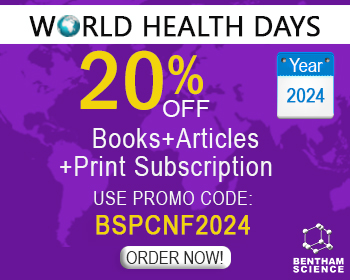Abstract
Gene therapy continues to grow as an emerging treatment strategy toward numerous diseases. However, such prospects are hindered by the use of viral vectors prompting significant safety concerns along with limitations concerning repeat administrations, size of delivered gene construct, scale-up, high production costs, contamination during production, and lack of desired tissue selectivity. Non-viral gene delivery demonstrates the potential to address the abovementioned limitations, but itself generally suffers from low efficacy. Continuing efforts have been made to develop innovative delivery systems, synthetic gene carriers, and DNA vectors in a concerted attempt to enhance gene delivery suitable for clinical applications. In this review, we focus on the advances in the design of novel DNA vectors catered to enhance transfection and transgene expression and their influences on the efficacy and safety of existing and emerging delivery systems and synthetic vectors for non viral gene delivery.
Keywords: Cationic lipids, gene therapy, linear covalently closed (LCC) DNA minivector, lipoplex, non-viral gene delivery, recombinant plasmid DNA vectors, synthetic vectors.
Current Gene Therapy
Title:Impact of DNA Vector Topology on Non-Viral Gene Therapeutic Safety and Efficacy
Volume: 14 Issue: 4
Author(s): Chi H. Sum, Shawn Wettig and Roderick A. Slavcev
Affiliation:
Keywords: Cationic lipids, gene therapy, linear covalently closed (LCC) DNA minivector, lipoplex, non-viral gene delivery, recombinant plasmid DNA vectors, synthetic vectors.
Abstract: Gene therapy continues to grow as an emerging treatment strategy toward numerous diseases. However, such prospects are hindered by the use of viral vectors prompting significant safety concerns along with limitations concerning repeat administrations, size of delivered gene construct, scale-up, high production costs, contamination during production, and lack of desired tissue selectivity. Non-viral gene delivery demonstrates the potential to address the abovementioned limitations, but itself generally suffers from low efficacy. Continuing efforts have been made to develop innovative delivery systems, synthetic gene carriers, and DNA vectors in a concerted attempt to enhance gene delivery suitable for clinical applications. In this review, we focus on the advances in the design of novel DNA vectors catered to enhance transfection and transgene expression and their influences on the efficacy and safety of existing and emerging delivery systems and synthetic vectors for non viral gene delivery.
Export Options
About this article
Cite this article as:
Sum H. Chi, Wettig Shawn and Slavcev A. Roderick, Impact of DNA Vector Topology on Non-Viral Gene Therapeutic Safety and Efficacy, Current Gene Therapy 2014; 14 (4) . https://dx.doi.org/10.2174/1566523214666140612154929
| DOI https://dx.doi.org/10.2174/1566523214666140612154929 |
Print ISSN 1566-5232 |
| Publisher Name Bentham Science Publisher |
Online ISSN 1875-5631 |
Call for Papers in Thematic Issues
Programmed Cell Death Genes in Oncology: Pioneering Therapeutic and Diagnostic Frontiers (BMS-CGT-2024-HT-45)
Programmed Cell Death (PCD) is recognized as a pivotal biological mechanism with far-reaching effects in the realm of cancer therapy. This complex process encompasses a variety of cell death modalities, including apoptosis, autophagic cell death, pyroptosis, and ferroptosis, each of which contributes to the intricate landscape of cancer development and ...read more
Related Journals
 92
92
- Author Guidelines
- Graphical Abstracts
- Fabricating and Stating False Information
- Research Misconduct
- Post Publication Discussions and Corrections
- Publishing Ethics and Rectitude
- Increase Visibility of Your Article
- Archiving Policies
- Peer Review Workflow
- Order Your Article Before Print
- Promote Your Article
- Manuscript Transfer Facility
- Editorial Policies
- Allegations from Whistleblowers
- Announcements
Related Articles
-
Anti-Breast Cancer Agents from Chinese Herbal Medicines
Mini-Reviews in Medicinal Chemistry Quantitative Comparisons of Deep-learning-based and Atlas-based Auto- segmentation of the Intermediate Risk Clinical Target Volume for Nasopharyngeal Carcinoma
Current Medical Imaging An Update on Disease Modifying Antirheumatic Drugs
Inflammation & Allergy - Drug Targets (Discontinued) Safety of Systemic Biologic Agents in the Treatment of Non-malignant Skin Disorders
Current Drug Safety MiR-509-3-5p-NONHSAT112228.2 Axis Regulates p21 and Suppresses Proliferation and Migration of Lung Cancer Cells
Current Topics in Medicinal Chemistry Role of Resveratrol in Modulating microRNAs in Human Diseases: From Cancer to Inflammatory Disorder
Current Medicinal Chemistry Update on the Rheumatologic Manifestations of Malignancy
Current Cancer Therapy Reviews Structure Based Lead Optimization Approach in Discovery of Selective DPP4 Inhibitors
Mini-Reviews in Medicinal Chemistry Stressed to Death: Targeting Endoplasmic Reticulum Stress Response Induced Apoptosis in Gliomas
Current Pharmaceutical Design Patent Selections
Current Biomarkers (Discontinued) A Review on Rheumatoid Arthritis Interventions and Current Developments
Current Drug Targets Targeting CSCs in Tumor Microenvironment: The Potential Role of ROS-Associated miRNAs in Tumor Aggressiveness
Current Stem Cell Research & Therapy Role of EGFR Monoclonal Antibodies in the Management of Non–small Cell Lung Cancer
Current Cancer Drug Targets Regulation of Autophagy by Sphingolipids
Anti-Cancer Agents in Medicinal Chemistry A Focus on Heme Oxygenase-1 (HO-1) Inhibitors
Current Medicinal Chemistry Prospects of miRNA-Based Therapy for Pancreatic Cancer
Current Drug Targets Players in ADP-ribosylation: Readers and Erasers
Current Protein & Peptide Science A Simple Scoring Model Predicting the Outcome of COVID-19 Patients: Tanta COVID Score
Endocrine, Metabolic & Immune Disorders - Drug Targets Signal Transducer and Activator of Transcription 3 Signaling Pathway: A Potential Target in Sarcoma Treatment
Current Enzyme Inhibition What Have We Learned from the Novel Human Cytochromes P450 Hidden in the Databases?
Current Genomics























